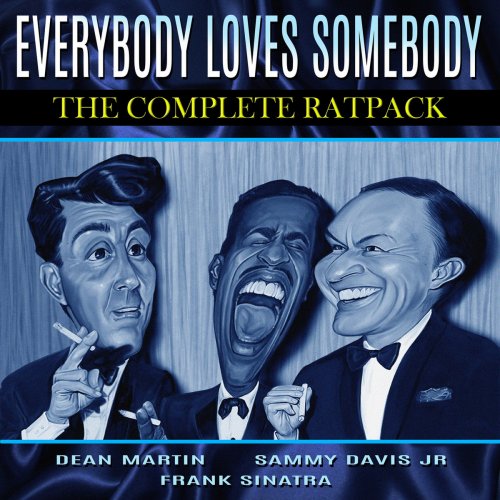Zbigniew Pilch - Enlightened Virtuoso (2017) [Hi-Res]

Artist: Zbigniew Pilch
Title: Enlightened Virtuoso
Year Of Release: 2017
Label: CD Accord
Genre: Classical
Quality: mp3 320 kbps / flac lossless / flac 24bits - 96.0kHz +Booklet
Total Time: 01:09:19
Total Size: 171 / 379 mb / 1.34 mb
WebSite: Album Preview
TracklistTitle: Enlightened Virtuoso
Year Of Release: 2017
Label: CD Accord
Genre: Classical
Quality: mp3 320 kbps / flac lossless / flac 24bits - 96.0kHz +Booklet
Total Time: 01:09:19
Total Size: 171 / 379 mb / 1.34 mb
WebSite: Album Preview
01. Assaggio in C Minor, BeRI 310: I. Grave
02. Assaggio in C Minor, BeRI 310: II. (Allegro)
03. Assaggio in C Minor, BeRI 310: III. (Lento)
04. Assaggio in C Minor, BeRI 310: IV. (Presto)
05. 36 Caprices for Violin, Op. 3: No. 32 in E-Flat Major
06. Violin Sonata in G Minor, Op. 3 No. 1: I. Marcia. Maestoso
07. Violin Sonata in G Minor, Op. 3 No. 1: II. Allegro assai
08. Violin Sonata in G Minor, Op. 3 No. 1: III. Andante con variazioni
09. 24 Caprices for Solo Violin, Op. 1, MS 25: No. 23 in E-Flat Major
10. Partite for Violin Solo in D Minor: I. Grave
11. Partite for Violin Solo in D Minor: II. Fuga
12. Partite for Violin Solo in D Minor: III. Gigue
13. Partite for Violin Solo in D Minor: IV. Ciacona - Gigue
14. Partite for Violin Solo in D Minor: V. Courante - Gigue
15. Rinaldo, HWV 7: Lascia ch'io pianga (Arr. Z. Pilch for Violin)
![Zbigniew Pilch - Enlightened Virtuoso (2017) [Hi-Res]](https://www.dibpic.com/uploads/posts/2021-04/1617260857_zbigniew-pilch-enlightened-virtuoso-2017-back.jpg)
The 18th century saw thorough and radical social, cultural and political changes. In a nutshell, we can define them as an attempt to free scientific, social and artistic research from the centuries-old patronages, such as those bestowed by the church and aristocratic or royal courts. Notwithstanding any evaluations of this period, the social changes led to, inter alia, the Great French Revolution, which abolished the established social order for the first time in Europe’s history. Scientific research led to ground-breaking discoveries and inventions, such as the steam engine, and in consequence resulted in massive changes in human migration, industrial development and, what is perhaps the most typical feature of the 19th century, the speed of travelling thanks to the use of railway. The 18th-century artists, such as Bach, Haydn, and Mozart, wearing servant uniforms for the most part of this century, towards its end made efforts to emancipate themselves as artists (Beethoven was largely an embodiment of such emancipation). In the following century this trend led to another extreme – the universal cult of the artist as envoy of the gods. The Enlightened Virtuoso is an attempt to show the artist-performer beginning to get independent in the second half of the 18th century by breaking up with the stereotype of a musician as a servant and heading towards artistic independence, in this case of the violin virtuoso soloist. The presented repertoire is a cross-section of styles in the Enlightenment Europe. On the one hand, one can still discern the reminiscences of the artful and ornate Baroque style and Sturm und Drang or Empfindsamer Stil inspirations, and on the other one can observe the influence of the Classical style and the first glimmers of the upcoming Romanticism. The composers are the great violinists active across Europe – Ivan Khandoshkin worked in Sankt Petersburg, Johan Helmich Roman in Stockholm, Friedrich Wilhelm Rust in Germany, Federigo Fiorillo, and Niccolo Paganini in Italy. Thus we get a full range of music in the second half of the 18th century, with all its richness and diversity. The recording was made by Zbigniew Pilch on a historical instrument with gut strings. The bow used is a copy of a bow from the turn of the 18th century. The interpretation of pieces is largely based on historical records concerning performance principles, including the use of articulation and fingering, adequate for performance practice in the second half of the 18th century.








![Marju Kuut - Marju Kuut: Üksi, kuid vabana (2025) [Hi-Res] Marju Kuut - Marju Kuut: Üksi, kuid vabana (2025) [Hi-Res]](https://www.dibpic.com/uploads/posts/2025-12/1765641100_cover.jpg)